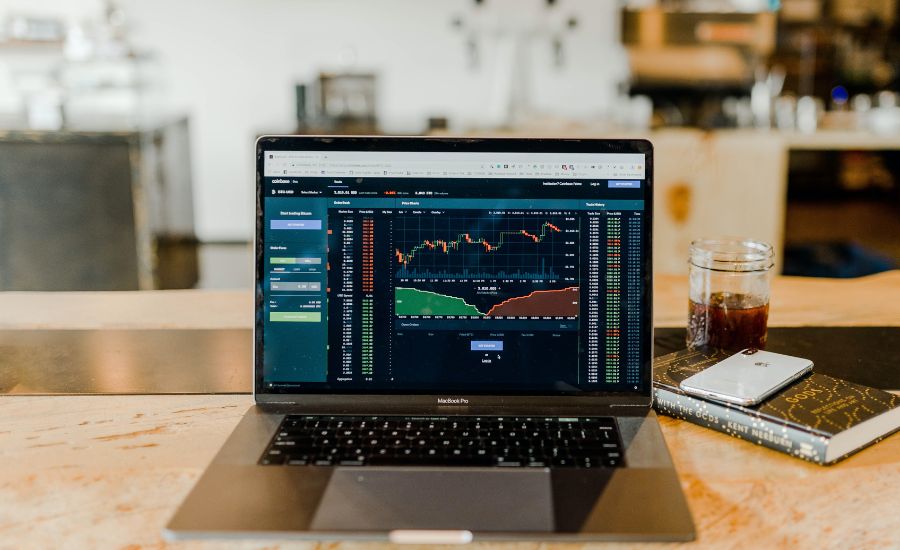How To Invest In ETFs As Beginner In 2023?
For the record, the world of investments is a pretty dynamic one, to say the least! Every other investor of today is on a scavenger hunt for higher-yielding investments. There are tons of new avenues of investments coming up in the market every day.
So it becomes necessary to evaluate which one could bring you the best returns and help you achieve your investment goals in the least possible time.
Out of a wide array of investment options, ETFs have taken a front seat for quite many investors. Owing to the benefits they offer, ETFs are a great option whether you’re just a newbie or an absolute veteran in the investing world.
If you are a beginner, ETFs are worth more considering for kick-starting your portfolio. They pose a reasonable opportunity to strengthen your portfolio over the years.
In case you’re clueless about where to begin, I am here to help. So without any further ado, let’s dive in….
What is an ETFs?
For starters, an ETF or an “Exchange-Traded Fund” is a collection of diverse securities you can trade during market hours. They can keep track of a particular commodity, index, or sector. The best part is that you can easily buy and sell an ETF on the stock exchange just like your regular stocks.
The edge you get is that investment in ETF will open opportunities for you to trade several commodities which will broadly diversify your investment portfolio.
It is a fruitful opportunity to further strengthen your profile especially if you have just initiated your trading journey. So, you can consider an exchange-traded fund as a basket of different securities you can trade with.
Also Read: How To Find Job As A Investor?
Types of ETFs
Some of the most common types of ETFs include:
- Commodity ETFs: They track a particular commodity such as gold.
- Index ETFs: They track a particular index such as NASDAQ.
- Fixed Income ETFs: They are bond funds available to be traded on stock exchanges, for example, US treasuries.
- Leveraged ETFs: They use leverages to give investors better returns.
- Inverse ETFs: As the name suggests, they benefit you when the market or any particular index suffers from a decline.
- Foreign Market ETFs: They track markets outside the US, such as the Hang Seng index of Hong Kong.
- Style ETFs: They mostly track a particular investment style such as small-cap growth.
- Sector and Industry ETFs: They deal in a particular sector or industry such as pharmaceuticals or technology.
How to invest in ETFs?
Exchange-traded funds have a simple way of functioning and you can invest in them hassle-free. They are very similar to how the regular stocks on the exchanges work. You can buy and sell ETFs anytime during the market hours like your other stocks.
ETFs have the ticker symbol as well. Furthermore, if you need to analyze the price data of an ETF during a particular day, you can do so with ease.
One difference between an ETF and regular company stock is that ETFs can have a fluctuating outstanding number of shares from one trading day to another. This is due to the constant redemption of shares and the creation of new ones.
ETFs can issue new and redeem existing shares constantly. As a result, the market prices remain in sync with the underlying securities.
Also Read: How To Invest In Gold?
ETFs are not merely restricted to individual investors. Institutional investors gain importance during times when the price of an ETF is not in line with the underlying value of the asset. They maintain the liquidity of the fund through buying and selling of the creation units.
These are collections of ETF shares that investors can exchange for underlying securities. So, when the price deviates from the underlying value, the institutional investors play a major role to get the price back at par with the asset value.
With that said, if you are skeptical about how to start investing in ETFs, the first step is to choose a trading platform. ETFs are available for trading on most investing platforms and apps. You must also research ETFs before investing in them.
Further, you can decide on the strategies you want to pursue to get the best returns from your ETF. You can hire brokers to buy ETFs or purchase them directly in your retirement account. Once your account is funded, you can explore the options available and buy the ones that look convincing to you.
Also Read: Can I Use RRSP For Day Trading?
ETFs Pros and Cons
Advantages of investing in ETFs
- ETFs are easy-to-trade investments since they are open for trading throughout the market hours. Whereas, mutual funds can exchanged only in the close of the day.
- The authenticity and transparency are excellent since most ETFs need to publish their holdings on a frequent basis.
- They provide major diversity to your portfolio by giving exposure to many different kinds of securities. You can also explore different sectors and industries.
- Diversification of your portfolio leads to the minimization of risk. It thus helps in risk management.
- ETFs, help you to focus on some particular industries in case you have a specific list of sectors to invest in.
- Broker commissions are comparatively low. So they prove to be cost-effective.
- ETFs are tax-efficient since they result in low capital gain distributions.
- Investors can enjoy varied order types because ETFs are traded like regular stocks.
Disadvantages of investing in ETFs
- Though ETFs are quite reasonable, the actively managed ETFs might not prove to be pocket-friendly.
- Technical issues might keep popping up while tracking a particular underlying index.
- ETFs from the same industry don’t provide diversification. This can increase your risks.
- There is a lack of liquidity frequently which hampers the smooth processing of transactions.
- ETF sales take two days to settle following the transaction. This becomes a problem for the seller as his/her funds from the sale will not be available to invest again during those two days.
ETFs Vs Mutual Fund
Let’s start this with the meanings in a nutshell of ETFs and mutual funds. ETFs are index funds which track a variety of securities. In contrast, mutual funds are combined into bonds, securities or similar instruments.
ETFs are traded during the trading hours of the market, however, mutual funds are exchanged only after the close of a day’s trading.
Exchange-traded funds track different commodities of the same sector or industry through a single fund. Similarly, a mutual fund tries to minimize risk by building a portfolio that involves different instruments and asset classes.
Prices of mutual funds trade at the net asset value of the fund while those of ETFs may trade at a loss or a premium. While ETFs don’t offer actual ownership, mutual funds take ownership of securities.
ETFs cannot be exchanged for cash, but mutual funds are redeemable in funds at NVA at the time of day. Mutual funds are generally more expensive than exchange-traded funds.
This is because ETFs can be purchased without commission. Also, mutual funds involve administration and marketing fees. Additionally, ETFs are more tax-efficient when compared to mutual funds because their share exchanges are considered in-kind distributions.
What is the best platform to invest in ETFs?
A large number of online brokers for ETFs have come up over the last few years. Some of the prominent ones are Vanguard Group, Merrill Edge, Ally Invest, and Charles Schwab.
Fidelity Investments, TD Ameritrade, and E-Trade Financial are among the other top online brokers to invest in exchange-traded funds. We recommend you choose a platform that is authentic, transparent and has been there in the market for a longer time. Once you decide on your platform, you can get to investing in your ETFs right away.
Is investing in ETFs worth it?
The market for exchange-traded funds has grown exponentially during the last couple of years. It has managed to reach a figure of $4.2 trillion in invested assets until 2020. Additionally, the massive number of options for ETFs has raised the bar for individual investors.
Investing in ETFs can prove to be worth it if you tactfully evaluate the pros and cons of each type before investing. Such criteria can include factors like the expense ratio, which is the cost of operation and management of a particular fund.
ETFs, in general, mitigate risk by offering great diversification in your portfolio. However, sector and industry-specific ETFs tend to restrict your profile to a few specific industries. This involves a little risk. You must carefully choose the ETFs that offer the highest risk management strategies to have a stable source of high-yielding returns.
Conclusion
Right off the bat, exchange-traded funds are an excellent and increasingly popular opportunity of earning good returns. Owing to the diversification and low trading expenses they involve, ETFs have successfully caught the attention of a large number of individual and institutional investors.
Beginners who are looking for simple and trustworthy sources of returns are counting on ETFs to start their profile on a good note. So they are worth considering investing your money. All you need to do is research thoroughly before making your final decision.
FAQs
Is investing in ETFs worth it?
The market for exchange-traded funds has grown exponentially during the last couple of years. It has managed to reach a figure of $4.2 trillion in invested assets until 2020. Additionally, the massive number of options for ETFs has raised the bar for individual investors.
What is the best platform to invest in ETFs?
A large number of online brokers for ETFs have come up over the last few years. Some of the prominent ones are Vanguard Group, Merrill Edge, Ally Invest, and Charles Schwab.
Which one is the best ETFs Vs Mutual Fund?
Let’s start this with the meanings in a nutshell of ETFs and mutual funds. While ETFs are index funds that track a bunch of securities, mutual funds are pooled into securities, bonds, or other similar instruments. ETFs can be traded throughout the market hours, but mutual funds can be traded only at the end of a trading day.
What is the Advantage of investing in ETFs?
1. ETFs are easy-to-trade investments since they are open for trading throughout the market hours. On the flip side, mutual funds can be traded only at the end of the day.
2. The authenticity and transparency are excellent since most ETFs need to publish their holdings on a frequent basis.
3. They provide major diversity to your portfolio by giving exposure to many different kinds of securities. You can also explore different sectors and industries.
4. Diversification of your portfolio leads to the minimization of risk. It thus helps in risk management.




